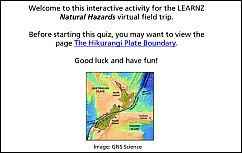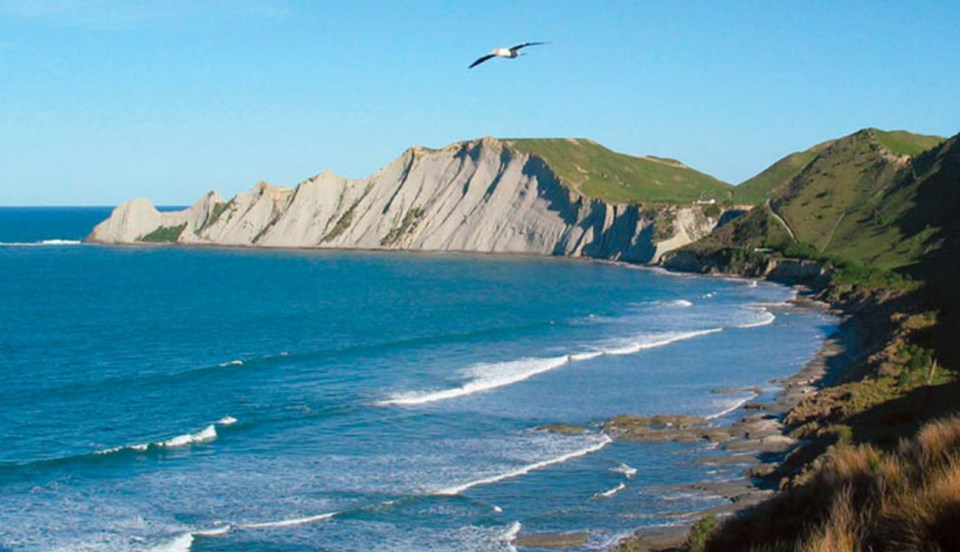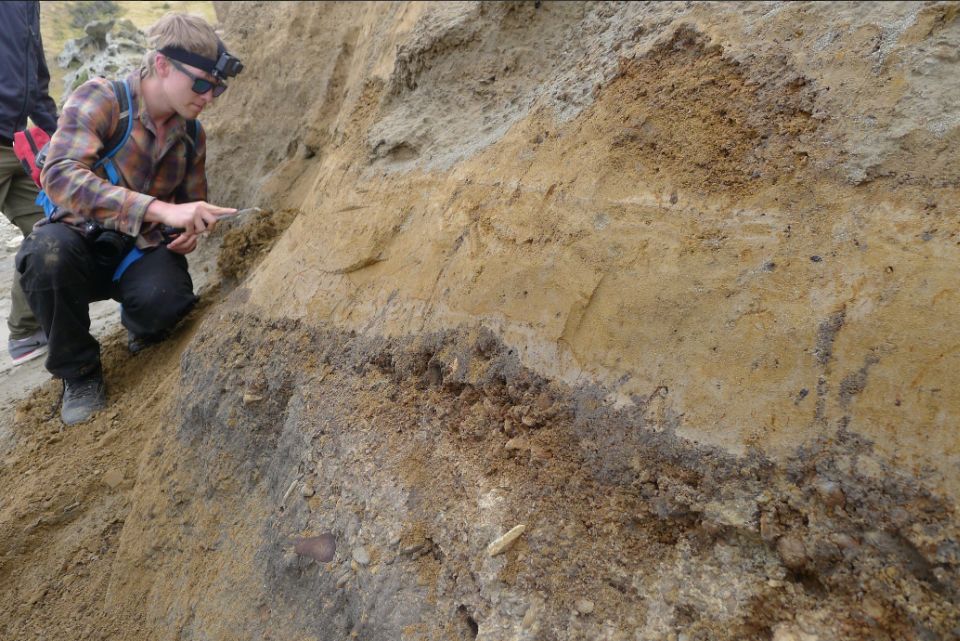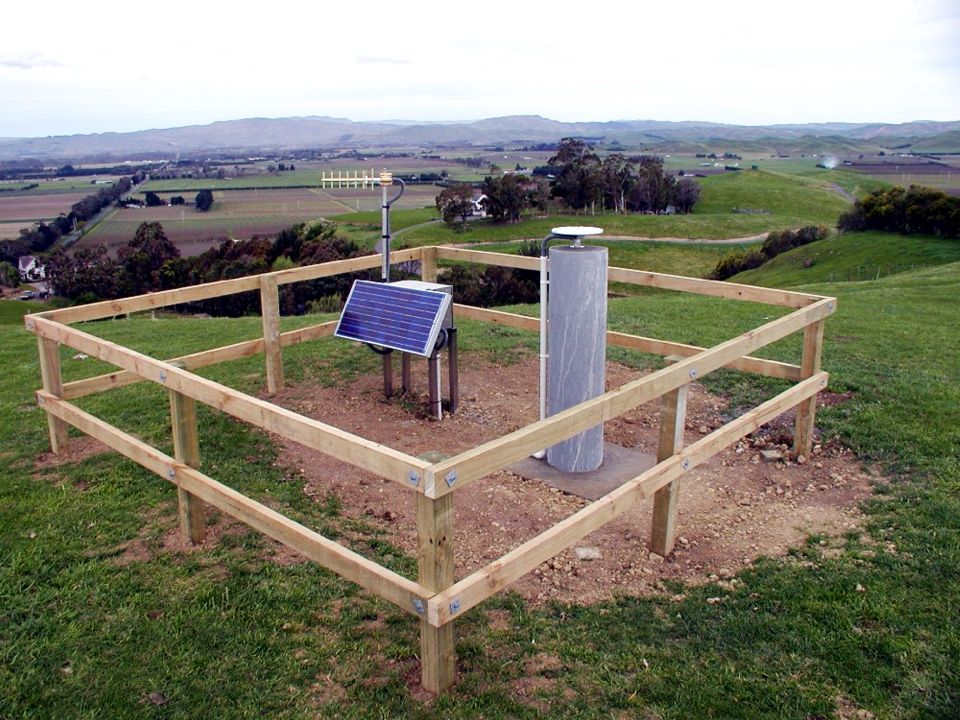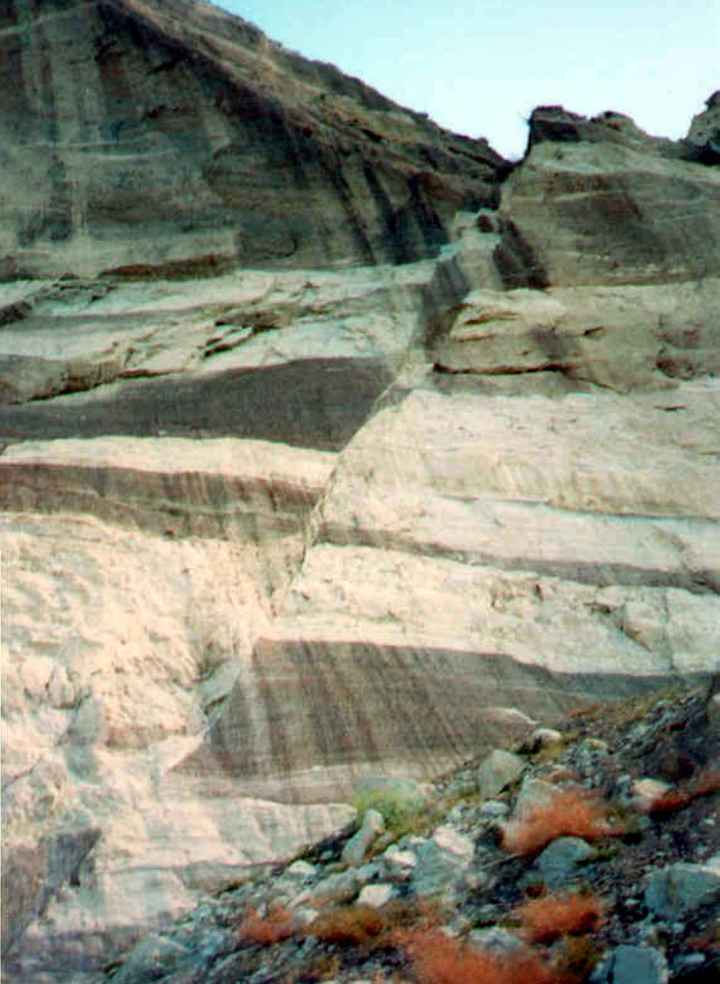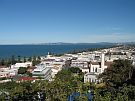East Coast
On the East Coast of the North Island you are close to the Hikurangi tectonic plate boundary. This boundary lies just off the coast and extends from Marlborough to the East Cape. This is the boundary between the Australian plate and the Pacific plate.
Hikurangi plate boundary
The Hikurangi tectonic plate boundary is a convergent boundary. This means that the Australian and Pacific plates are pushing against each other. There are two kinds of plates – oceanic and continental plates. When oceanic and continental plates meet, the denser oceanic plate moves under the less dense continental plate.
The Australian plate is a continental plate and the Pacific plate is an oceanic plate. At this boundary, the Pacific plate is slowly moving under the Australian plate. This process is called subduction and creates a deep oceanic trench.
As the Pacific plate moves under the Australian plate it melts and forms molten or partly molten rock below the Earth’s surface called magma. Magma builds up and creates pressure under the earth’s surface and when this pressure is released it causes earthquakes, tsunami, and volcanic eruptions.
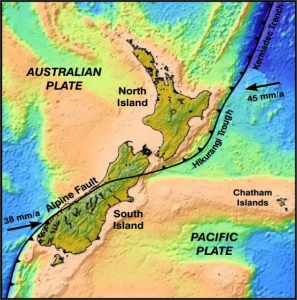
The Hikurangi subduction zone
The Hikurangi subduction zone is poorly understood, yet potentially the largest source of earthquake and tsunami hazard in New Zealand. Subduction zones are a type of fault and are responsible for the largest and most powerful earthquakes and tsunamis in the world, such as
- Sumatra 2004
- Chile 2010
- Japan 2011.
We know that the Hikurangi subduction zone can produce large earthquakes and tsunamis, and that these events have occurred in the past. However, we don’t know how often these earthquakes tend to happen, nor do we know how large they can be.
A large team of national and international scientists will be studying the Hikurangi plate boundary to find out what risk it poses to New Zealand.
This project will involve:
- Building and installing seafloor sensors
- Using specialised research ships to carry out sea bed drilling and imaging of the sea floor
- Gathering geological evidence of past Hikurangi earthquakes and tsunami
- Working with iwi partners to understand Mātauranga Māori and their past experiences of earthquakes and tsunami
Sea floor sensors will be used to detect offshore earthquakes, slow slip events, and accurately record New Zealand’s offshore plate tectonic movements for the first time. These sensors could also be used in tsunami and earthquake early warning systems in the future.
Specialised research ships will make it possible to carry out drilling and seismic imaging. This data will tell scientists about the physical conditions and rock types at the plate boundary, and reveal what is causing the Hikurangi subduction zone to move slowly (in slow slip events) or suddenly (in earthquakes). This will help scientists understand what has influenced earthquakes and tsunamis in the past, so they can better anticipate what might happen in the future.
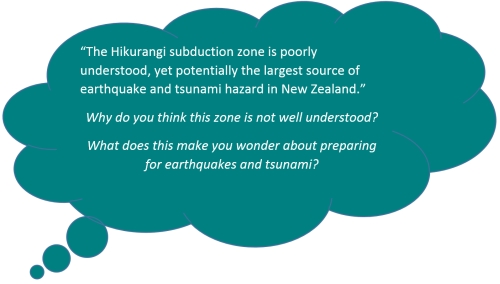 Scientists will also be gathering geological and historical evidence for past large Hikurangi earthquakes to improve our understanding of the hazards and the risk to New Zealand. This will involve collecting offshore cores and studying coastal sediments to explore the geological record of past earthquake and tsunami events.
Scientists will also be gathering geological and historical evidence for past large Hikurangi earthquakes to improve our understanding of the hazards and the risk to New Zealand. This will involve collecting offshore cores and studying coastal sediments to explore the geological record of past earthquake and tsunami events.
To better understand past events scientists will also be studying Mātauranga Māori and how Māori were effected by past Hikurangi earthquakes and tsunami.

